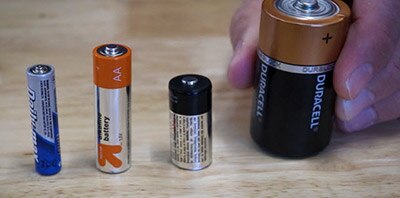Low Noise 45V-4A Dual Rail Power Supply, Enhanced Capacitance Multiplier
2023-12-11 | By Hesam Moshiri
License: Attribution-NonCommercial-ShareAlike Power Supplies
The core element of any electronic device is the power supply. Any instability or malfunction of the power supply causes the device to malfunction or demonstrate weird behavior. In some sensitive applications, we need a dual voltage-rail power supply to prepare a high current and low noise voltage at the output. In this article/video, I introduced a low-noise AC-to-DC power supply that can handle up to 4A continuously and accept input voltages up to 35V-AC.
To design this power supply, I decided to use an enhanced capacitance multiplier circuit. I paid high attention to good grounding, assigned the top layer of the PCB to the ground, and drew power planes instead of tracks to carry high currents. As a result, I could not detect any noise or ripple at the output even at the maximum output current!
I tested the board for voltage drop, current delivery, and output noise. I used Siglent SDL1020X-E DC Load and Siglent SDS2102X Plus oscilloscope to perform all tests. I’m confident that this design satisfies your needs in many applications.
Specifications
Input Voltage (max): 35V-AC
Output Current: 4A Continuous
Output Noise/Ripple: Very Low
Output Voltage: 45V-DC (maximum safe, under no load)
Circuit Analysis
Figure 1 shows the schematic diagram of the circuit. The core of the design is an enhanced capacitance multiplier circuit.
Figure 1, Schematic diagram of the Low Noise 45V-4A Dual Rail Power Supply
AC-IN is a KF129 terminal connector to connect your center-tapped AC transformer to the circuit. BR is a D15XB60 high-current bridge rectifier that can work up to 3A-4A without any heatsink. C1 … C4 are input capacitors for preliminary ripple reduction because the ripple rate at the input is extremely high. Each pair of these capacitors is placed in parallel to reduce the equivalent ESR (two ESR resistors in parallel). The rest of the circuit is the capacitance multiplier circuit. T1, T3, and T2, T4 create a Darlington transistor to multiply the equivalent capacitance even more. In my experiments, this kind of arrangement handles better performance than using a single Darlington transistor.
D2 and D3 protect the T3 and T4 transistors from reverse currents. R7 and R8 are a few milliamps dummy loads to stabilize the output voltage.
PCB Layout
Figure 2 shows the PCB layout of the design. It’s a two-layer PCB board and all component packages are through-hole. This makes it easy even for beginners to build this circuit.
Figure 2, PCB layout of the Low Noise 45V-4A Dual Rail Power Supply
As it’s clear in the picture, I assigned the top layer just to the ground and it’s a solid ground plane. In addition to the routing techniques for the bottom layer, this PCB is expected to demonstrate low noise figures.
Assembly and Test
Figure 3 shows the assembled PCB board. If you would like to save time in soldering and purchasing the components, you can order the board as assembled.
Figure 3., Assembled PCB board of the Low Noise 45V-4A Dual Rail Power Supply
I run several tests to verify the performance of the circuit. You can watch the YouTube video to get more detailed information regarding the tests. Figure 4 shows the output noise of the power supply under no load, and Figure 5 shows the output noise under a 4A load. Tests have been performed using the Siglent SDS2102X Plus oscilloscope. My oscilloscope could not pick up any noise at the output indeed.
Figure 4, Output noise of the Low Noise 45V-4A Dual Rail Power Supply (no load)
Figure 5, Output noise of the Low Noise 45V-4A Dual Rail Power Supply (4A load)
Bill of Materials
Figure 6 shows the bill of materials (BOM) of the project.

Have questions or comments? Continue the conversation on TechForum, DigiKey's online community and technical resource.
Visit TechForum












 中国
中国